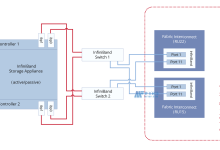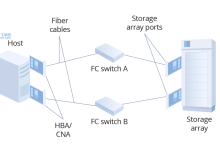Second Step:The Five Steps to Strengthening Your linux Security
Every internet user should be aware of the importance of keeping their computers protected from malicious software and attacks, especially if they are using a Linux operating system. Using security like anti-viruses, good passwords, and firewalls is not enough – there is much more to ensuring your PC is secured.
A hacker can gain access to your data and system by exploiting existing vulnerabilities. Hackers use a variety of methods, including exploiting weak passwords and unauthorized access to gain entry into a system. That said, one of the best ways to ensure your Linux system is secure is by following a few key steps.
1. Update Software
Software updates are the single most important way to improve the security of your Linux system. Software updates typically patch or fix any security exploits allowing hackers to gain access to your system. As soon as updates are available, you should apply them to your system. You can make sure that your programs are always up to date with the latest versions by creating a cron job. You can do this by entering the following command in your terminal:
`$ crontab -e`
If you are unsure of how to set up the cron job, then feel free to use a cron job scheduler tool to make sure that your system is always updated.
2. Use Secure Passwords
Creating strong and secure passwords is essential in keeping your Linux system safe. It is advisable to use different passwords for different accounts, and make sure to change them regularly. You can use password management tools to securely store your passwords in one place. Additionally, you should make sure to use two-factor authentication when possible, as it can help secure your accounts even further.
3. Protect Access
One of the best ways to protect your Linux system is to limit access to it. You can do this by setting up a login and password for your system. This means that only those with the correct credentials will be able to access your system. Additionally, you should also configure your firewall to make sure that only certain ports are allowed access.
4. Limit Root Access
It is essential to limit root access to your system to only trusted users. Root access is the highest level of authority on a Linux system, and thus any user with this access can make changes to the system that can be potentially damaging. Therefore, it is important to only give access to those who really need it and make sure that only authorized users can make changes to the system.
5. Monitor System Activity
It is important to regularly monitor your system’s activity to detect any suspicious activity or attempts at access. You can monitor activity by logging user activity, analysing network traffic, and running scans. Additionally, you can set up data backups and run periodic security checks to make sure that your system is secure.
Following these steps will help ensure that your Linux system is secure and that your data is safe. Keep in mind that security is an ongoing and evolving process, so it is important to stay up to date with new security measures and updates to ensure the best security for your system.

 国外主机测评 - 国外VPS,国外服务器,国外云服务器,测评及优惠码
国外主机测评 - 国外VPS,国外服务器,国外云服务器,测评及优惠码









